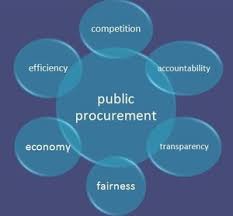Corruption in Pharmaceuticals – International Perspective 8 – Blog Post #502 by Asrar Qureshi
Corruption in Pharmaceuticals – International Perspective 8 – Blog Post #502 by Asrar Qureshi
Dear Colleagues! This is Pharma Veterans Blog Post #502. Pharma Veterans welcomes sharing of knowledge and wisdom by Veterans for the benefit of Community at large. Pharma Veterans Blog is published by Asrar Qureshi on WordPress, the top blog site. Please email to asrar@asrarqureshi.com for publishing your contributions here.
Continued from Previous…… This series is based on a report compiled by Jilian Clare Cohen1, Monique Mrazek2, and Loraine Hawkins3 for World Bank.
Six decision points were identified where corruption could infiltrate. The first was manufacturing, second was marketing authorization, third was selection, fourth was procurement, fifth is discussed below.
Decision Point Five: Distribution
[Quote] Whether it is a government agency or a private company that is contracted out by the government to distribute drugs, the system needs to ensure the timely and safe delivery of appropriate quantities of drugs to health facilities and pharmacies where supplies are needed. Distribution and storage costs can comprise a significant amount of the retail price of a drug, especially when drugs are distributed to remote locations or where a lack of competition leads to inappropriate mark-ups by wholesalers and retailers.[Unquote]
Good Distribution Practice standardizes requirements for personnel, documentation, premises and equipment. Just one component of distribution such as poor storage conditions can lead to losses due to both the diversion (corruption) and expiration of drugs (inefficiency). A well-designed and well-managed distribution and storage system aims to:
• maintain a constant supply of drugs
• keep drugs in good condition throughout the distribution process
• minimize drug losses due to spoilage and expiry
• rationalize drug storage points
• and use available transportation resources as efficiently as possible
There are several models for handling supply of drugs which are purchased for public consumption.
1. Government procures all drugs centrally, stores these in a central store, which in Pakistan is called MSD (Medical Stores Depot). In this model, the government takes full responsibility for purchasing, storing, and distributing the drugs.
For many years, this model was used in Pakistan. Provincial governments purchased drugs and medical supplies through a bidding process and stored in the central store called MSD. All public health centers sent their demands before bidding which was added up for cumulative purchase. The centers were then supplied according to their demand. In this model, the prices remained uniform and the mandatory service charges related to government purchases remained within a reasonably small limit. Quality also remained constant, because high-quality and low-quality drugs were equally distributed across the province. Not everything was perfect in this system, but it worked fairly well.
2. Government authorizes procurement at various levels, allocates budget proportionately and lets them do their own bidding. Purchase, storage, and distribution burden is divided accordingly.
This model was adopted after the centralized model in Pakistan. District Authorities were given budgets and were allowed to do purchases on their own. This led to huge variations in the type of drugs purchased, purchase prices, opened new avenues for corruption, and multiplied the service charges by a factor of five or more. The purchases suffered from other issues.
3. Government does the bidding process centrally, negotiates and finalizes the prices and circulates the final prices to district authorities. They would make purchases and get delivery directly.
This system currently prevails in Punjab and Khyber Pakhtunkhwa (albeit a little variation). Provincial health directorate issues and finalizes tenders centrally; the districts place orders and receive supplies individually and directly. In addition, every teaching hospital is allowed to do their own bidding independently as these are not controlled by the provincial health directorate.
4. Government floats two tenders; one for purchase of drugs, and second for a prime vendor who would buy on behalf of government at government approved prices and deliver at its own cost, and peril.
This model is not used in Pakistan. In fact, it was never used here.
5. Government opts to use a fully private system for procurement and distribution of drugs to all health centers.
This system is neither in vogue, nor ever used in Pakistan.
It cannot be said with certainty as to which system is better able to reduce the likelihood of corruption. What is needed for each of these models are oversight mechanisms, benchmark standards, and transparent procedures.
Good distribution is integral to making healthcare available at district/ tehsil/ rural level. [Quote] Strategies to reduce the risk of corruption include the following.
• Information must flow easily through every level of the distribution system to control inventory movements and deliveries. This is usually best done through the use of a computerized and automated information system.
• Quality standards must be maintained in storage facilities, and should include refrigeration units to guarantee the integrity of the drugs and good security to minimise the risk of theft.
• The electronic monitoring of transport vehicles and careful checking of delivery orders against inventories of products delivered are some of the methods that can reduce this likelihood.
• Further implementing a Public Expenditure Tracking survey is a useful tool for assessing whether the drugs and the financing for drugs are getting to the ultimate delivery points such as the health clinics and hospitals particularly those in rural areas. [Unquote]
To be Continued……
Disclaimer. Most pictures in these blogs are taken from Google Images which does not show anyone’s copyright claim. However, if any such claim is presented, we shall remove the image with suitable regrets.
1. Jilian Clare Cohen – Toronto, Canada
2. Monique Mrazek – Latin America
3. Loraine Hawkins – London





Comments
Post a Comment